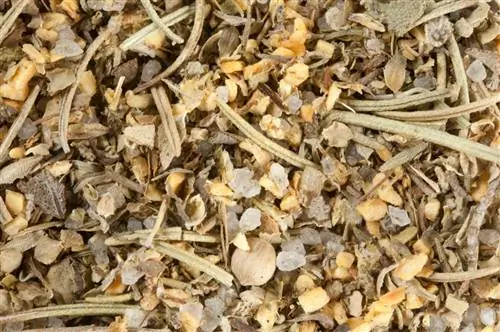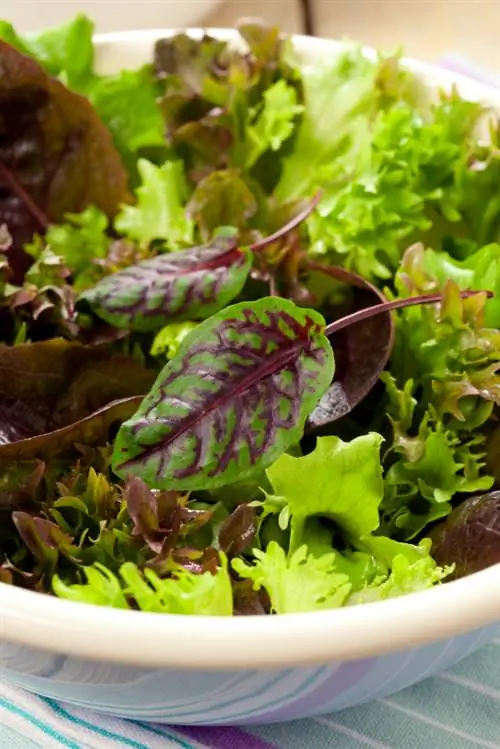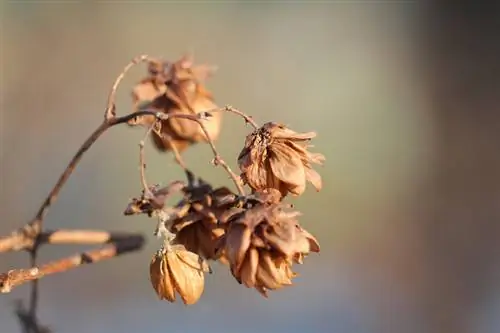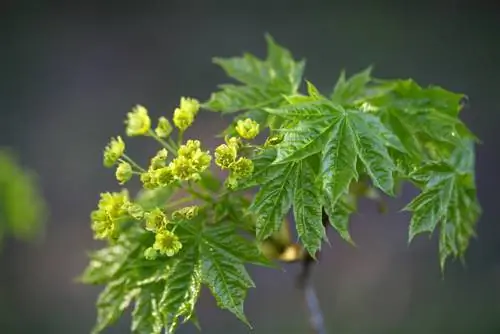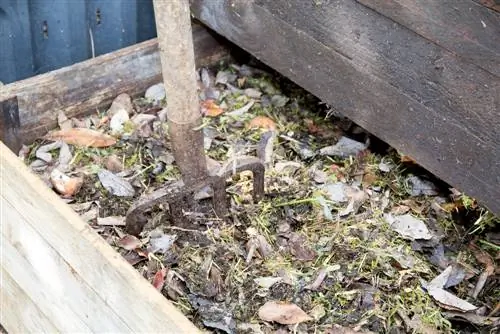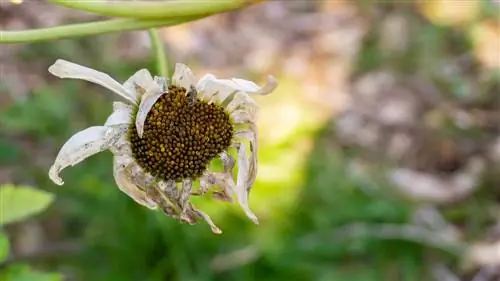- Author admin [email protected].
- Public 2023-12-16 16:46.
- Last modified 2025-01-23 11:20.
Growing rosemary plants from seeds is quite a laborious process. Unfortunately, the very fine seeds germinate very unreliably, and due to mutations, all sorts of things can result. Nevertheless, at this point we provide you with precise instructions for propagating rosemary from seeds.
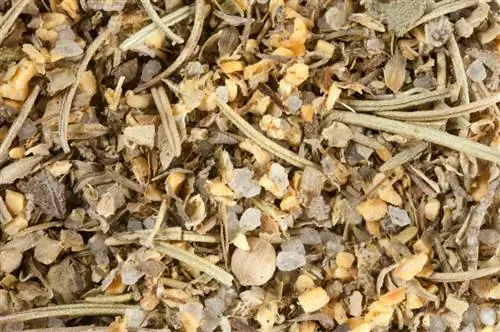
How to grow rosemary from seeds?
To grow rosemary from seeds, mix the fine seeds with sand, sow them in moist seed soil, cover them thinly with soil and keep the soil slightly moist. After germinating the seedlings, prick them out and ensure there is sufficient ventilation and a bright environment.
Sowing rosemary seeds
The chances of rosemary germinating are significantly higher if you sow the seeds straight away in the right soil. Special seed soil is very fine and definitely meets the requirements placed on it. It also stores moisture well and is low in nutrients - as a Mediterranean plant, rosemary prefers poor soil, and too high a s alt content can damage the sensitive seedlings. When the seedlings finally mature, you can transplant them into more nutrient-rich soil.
- Mix the fine rosemary seeds with the same amount of fine sand before sowing.
- This way the seeds can be distributed more evenly.
- Now fill the growing container with the seed soil.
- Moisten the soil using a spray bottle and let it rest for another 30 minutes.
- Sprinkle the seed-sand mixture evenly over the substrate.
- Sift a thin (!) layer of moist soil over the seeds, no thicker than the seed itself.
- Rosemary is a light germinator.
- Cover the container with glass or transparent film.
- Place it in a bright and warm location.
Care for seedlings properly
Propagated plants require a constantly moist environment, but it must not be wet. In soil that is too saturated with water, less oxygen reaches the roots, and the climate also favors the development of diseases. Seedlings must have adequate breathing room. As soon as shoots are visible, remove the cover of the growing container. Protect the plants from drafts and direct sunlight, but leave them in a bright location.
Thinning seedlings
The first leaves to appear after germination are the cotyledons. These swell during germination and cause the seed coat to burst. They form the first food reserves for the plant. The next leaves are the first “real” leaves. As soon as these are fully developed, the seedlings can be pricked out, i.e. H. isolated, become. Discard weak and sickly-looking seedlings.
Tips & Tricks
Too dense planting and a lack of ventilation can cause damping-off disease. This devastating disease damages and disfigures new leaves and shoots, weakening the entire plant. The disease is caused by fungi in the air and soil that primarily attack the roots. Damping-off disease can be prevented by pricking out the seedlings in a timely manner. You should also be careful not to overwater the young plants.

